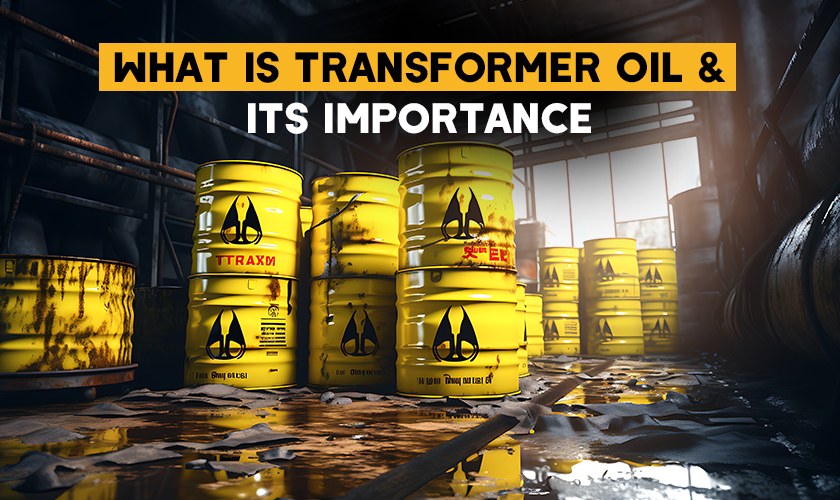Transformers are getting more popular for modifying the supply of voltage in traditional power circuits. Suppose you're looking to lower the voltage required to operate devices that are not powered by electricity or increase the voltage for extended transmission of electric power. In that case, transformers will be the best way to move!
Two types of transformers are there: one is a dry type, and another is an oil-filled one. While they have a mutual goal, they differ in terms of maintenance, cost, and efficiency.
The difference between a dry-type and an oil-type transformer is one of the most popular debates on the market. If you are still deciding which one to choose between these two transformers, look at this article to the very end!
This article will provide the best guide to those needing clarification about what specifications these transformers have and how they differ from each other. There are differences in price and maintenance, noise, and energy efficiency. Let's begin, let's get started!
What is a Dry-Type Transformer?
Dry-type transformers are devices that are not moving and utilize environmentally friendly and temperature-controlled systems of insulation. This type of transformer comes within a box with sufficient airflow that leads to the cooling of the coils with the help of air inside the box. In addition, they have coated the windings with aluminum or copper.
Due to the cooling restrictions, dry-type transformers from Makpowerts have a maximum voltage limit of 11kV with a power range of 25 KVA to 3150 KVA.
What are the different types of Dry-Type Transformers?
There are four subtypes of a Dry-type transformer, such as:
1. Open wound transformer
2. Cast Coil transformer
3. Vacuum Pressure Encapsulation
4. Vacuum pressure impregnated
Dry-type transformers are used in a broad variety of industrial and commercial applications. They are typically used in medium and low-voltage applications in electrical gadgets.
What is an Oil-Filled Transformer?
Filled with oil, as well as the oil-immersed type of transformers, are transformers that convert voltage using an oil-based cooling system to maintain the temperature of the transformer. This kind of transformer is mounted inside an oil tank made of steel that contains oil.
When an oil-filled transformer is in operation, the heat produced by the iron core and coil initially goes to the insulating oil and subsequently to the cooling fluid. The majority of applications for oil-filled transformers are outside due to the inflammability of the liquid.
What are the different types of Oil-Filled Transformers
There are two significant kinds of transformers that are oil-filled:
1. Single-Phase Transformers
2. Triple-Phase Transformers
The oil-type transformers are installed on poles, pads, or the ground. They can perform well in a variety of settings, such as small-scale enterprises, distribution and transmission lines, and the production of renewable energy.
Main Differences Between A Dry Type and An Oil-Type Transformer
Check out the distinctions between dry-type or oils-filled transformers to better understand how they function.
1. Medium of Cooling:
Under load, transformers are prone to overheating. They need to be cooled to prevent overheating and the potential for an explosion or fire.
The cooling systems of the two transformers differ primarily from one another. Transformers of the dry type use air as their cooling medium, while those of the oil type, as their name suggests, use oil.
2. Maintenance Cost:
Maintenance costs for oil-filled transformers are higher than those for dry ones. Extra attention must be paid to transformers holding oil because the oil must be regularly tested for chemical contamination. They also require oil filtration at least once a year.
Conversely, dry-type transformers are impervious to chemical attack. They don't need to be taken off the grid in the case of a minor incident.
3. Cost of Operation:
Transformers filled with oil likely have more expense than dry type. However, the truth is quite the opposite.
Transformers filled with oil are not so expensive due to their traditional energy efficiency, which makes them reliable and durable. Dry transformers utilize a higher amount of energy and result in a more significant cost of operation.
4. Coil Recycling:
Oil transformers have a more straightforward core recycling process than dry-type transformers, as they come with restricted coil recycling.
5. Efficiency:
Oil-filled transformers are more efficient than dry-type transformers. They come with a lower voltage rating, are less powerful, and are heavier. Dry transformers are, therefore, more likely to overheat during overload, which can result in higher maintenance costs and more electrical losses.
6. Area of Installation:
It is the main distinction between two transformers and is the most crucial consideration when choosing one. Owing to the possibility of an oil spill that could be extremely dangerous, the oil-filled transformers are typically located outside.
The construction industry uses dry-type transformers because they pose less risk to the environment and are safer. They are utilized in office buildings, malls, hospitals, and other establishments because they are less explosive.
Final thoughts
Finally, we have concluded that we should discuss the kind of transformer one should purchase. Based on the type of industry, voltage requirement, and area of installation, one can choose between these two.
Makpower Transformer proudly manufactures dry-type transformers per IS 11171/SAN 180 and IEC 60076-20 standards.
Visit our website now and explore a range of transformers that will meet the needs of your industry.





